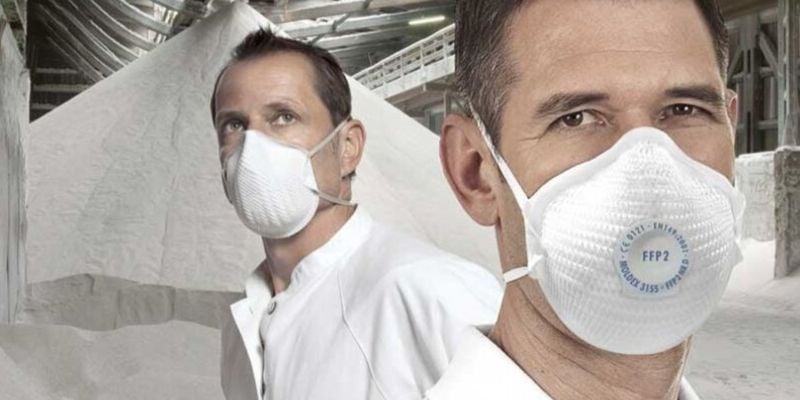How to choose the right dust mask

When working in an environment where there is potential for you to breathe in a range of dust, vapours, fumes and spores, industry bodies and the Health and Safety Executive of the employer are committed to reducing damage caused to the lungs by such airborne contaminants.
An effective way to achieve this is by wearing lightweight disposable respirators, also known as ‘dust masks’. To help ensure you are protected, all respirators provided for use at work must be CE marked to show that the design has been tested to a recognised standard. They must also be marked with that standard, which for disposable respirators is EN 149: 2001.
Additional markings, such as FFP1, FFP2 or FFP3, (Filtering Face Piece) indicate the protection level that you can get if the respirator is a good fit and you use it correctly along with OEL and APF guidelines.
An occupational exposure limit (OEL) is an upper limit on the acceptable concentration of a hazardous substance in workplace air for a particular material or class of materials. It is typically set by competent national authorities and enforced by legislation to protect occupational safety and health.
Assigned Protection Factor (APF) is the workplace level of respiratory protection that a respirator or class of respirators is expected to provide to employees when the employer implements a continuing, effective respiratory protection program.
What are the different FFP levels?
FFP1
FFP1 dust masks protect against low-level contaminants, 4x occupational exposure limit (OEL) or 4x assigned protection factor (APF). FFP1 Dust Masks are suitable for applications like hand sanding, drilling, and cutting.
FFP2
FFP2 Dust Masks protect against moderate levels of dust, as well as solid and liquid aerosols. FFP2 Dust Masks have a higher level of protection than FFP1 – FFP2 masks protect against materials in concentrations up to 12x OEL or 4x APF. FFP2 masks are ideal for tasks such as plastering and sanding.
FFP3
FFP3 Dust Masks protect against higher levels of dust. They also protect against solid and liquid aerosols. FFP3 masks protect against materials in concentrations up to 50x OEL or 20x APF. FFP3 masks are suitable for handling hazardous powders, such as those found in the pharmaceutical industry.
Moldex offer a wide range of FFP masks, which provide optimum protection from airborne particles in all protection levels and for a variety of applications.
Conclusion
When purchasing a disposable respirator, or dust mask, it is important to know the application you will be working with along with the environment you will be working in so that you are able to distinguish what level of protection, or FFP you will need to stay safe. Your employer/health and safety manager/quality manager should be able to assess this and provide you with information on the correct masks for your job.Other useful information from the HSE
- Dust masks in agriculture
- Occupational Exposure Limit (OEL)


